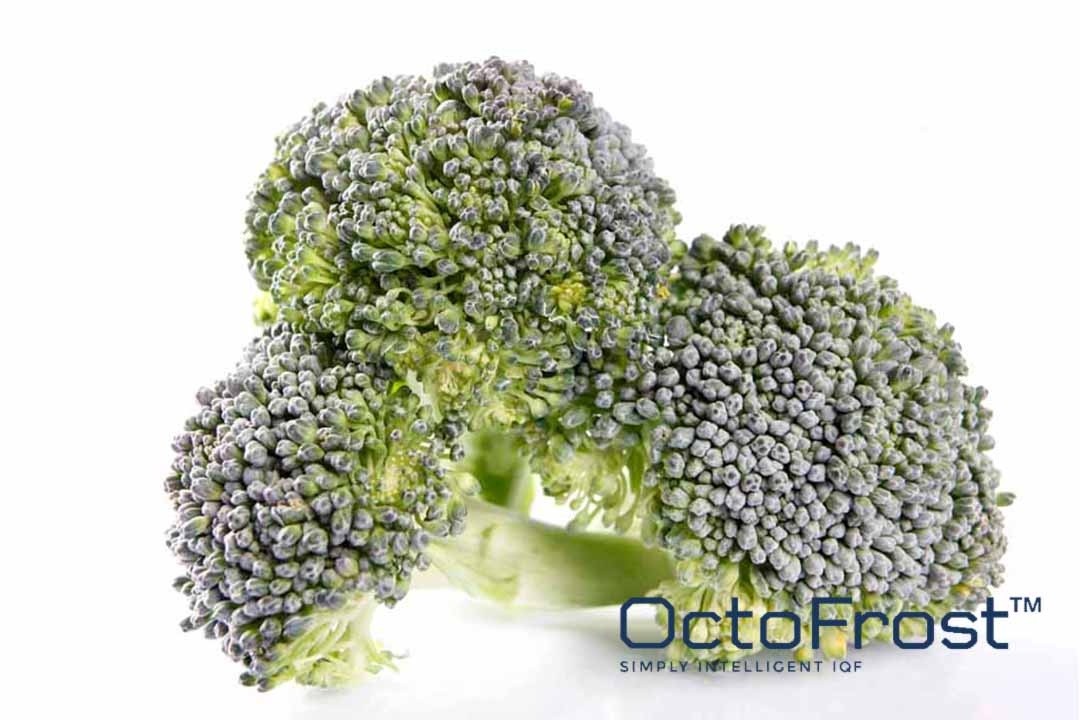
IQF FREEZING FOR MORE NUTRITIOUS VEGETABLES
As part of the natural process, once a vegetable is harvested it begins to release heat and lose water. This is what we call respiration, and it has an impact on the nutritional qualities of the vegetables we want to consume. If we consider the time between quality control, transportation, handling and the moment vegetables reach the shelfs, ready to buy, the products might have already lost half of the original amount of nutrients.
Freezing comes with the solution by being the most simple and natural way of preserving vegetables and studies show that frozen vegetables have just as much or even more nutrients than fresh vegetables. Fresh vegetables produce enzymes that will cause the loss of color, flavor and nutrients right after harvest, but this reaction can be stopped with the help of the freezing process. Freezing deactivates the enzymes responsible for all of this and locks the nutrients inside the vegetables, thus the vegetables keep the same amount of nutrients for a longer period of time.
The IQF freezing method is the most used freezing procedure for vegetables worldwide because the vegetables are individually quick frozen, but the growing demand on the frozen foods market, competition and consumers that are more and more pretentious with the quality of the vegetables they buy, is making processors looks for solutions that not only retain all the nutrients of the vegetables but also preserve the natural appearance, taste, texture, color and shape of the products.
One of the most challenging aspects for processors when freezing vegetables is keeping a good separation of the products as they can stick to each other creating lumps and block formations – because they usual have a high water content – as well as preserving the natural appearance of the products. However, these challenges can be overcome by choosing a performant freezing equipment.
Frozen vegetables maintain their natural appearance, texture, shape and color when they are frozen in an OctoFrost. All of this is possible because of the unique bedplate configuration and its quick and controlled freezing process.
Fragile vegetables like broccoli, spinach or asparagus for example are easily damages and thus require gentle handling. The OctoFrost is built with up to 5 different freezing zones that allow good control over the fan speed. The fan speed is adjusted accordingly, depending of the products particularities. The removable bedplates are made of food-grade plastic and are perforated. The material of the bedplates is extremely important because compared to the usual mesh steel belt found inside traditional IQF freezers, the products don’t get stuck on the belt nor do they get freeze burns and belt marks.
What the OctoFrost IQF tunnel freezer actually does is to create the optimal fluidization, and all the unique innovative features of the freezer are contributing to this.
In order to create the perfect fluidization, additional to the controlled fan speed, the perforations inside the bedplates allow the air to move through the plates and thus push the products into the air at an optimal speed, making them slowly move towards the outfeed of the freezer.
Additional features like the pulsator, bed vibrator and the wave plate will separate the products in such a way that results in natural looking IQF vegetables, with the color, shape and texture intact.
With the help of new innovative technologies like the OctoFrost freezer, vegetable processors can now achieve premium quality IQF vegetables, perfectly separated, that preserve the natural appearance, color, shape, texture and nutrients of the vegetables.
